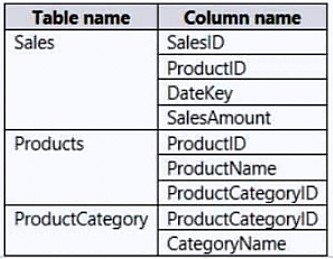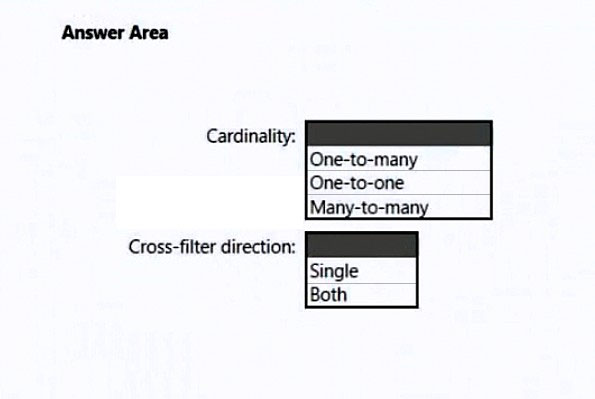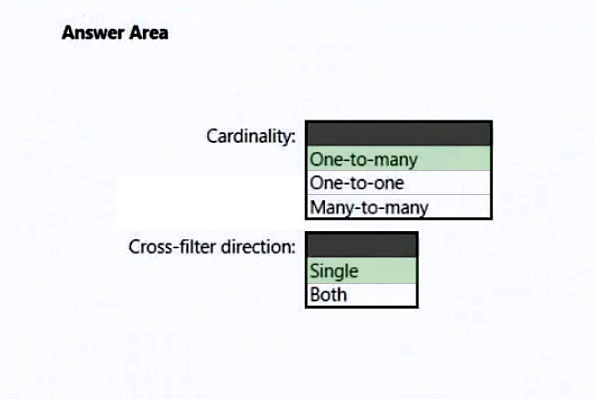HOTSPOT -
You are creating a Microsoft Power BI data model that has the tables shown in the following table.

The Products table is related to the ProductCategory table through the ProductCategoryID column. Each product has one product category.
You need to ensure that you can analyze sales by product category.
How should you configure the relationship from ProductCategory to Products? To answer, select the appropriate options in the answer area.
NOTE: Each correct selection is worth one point.
Hot Area:

